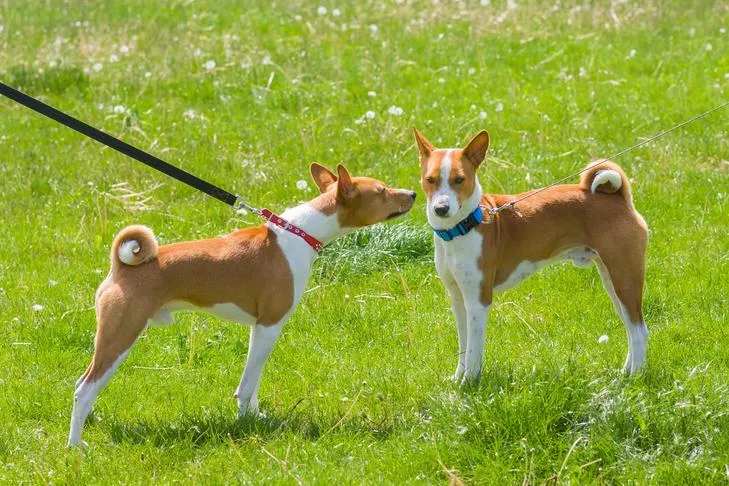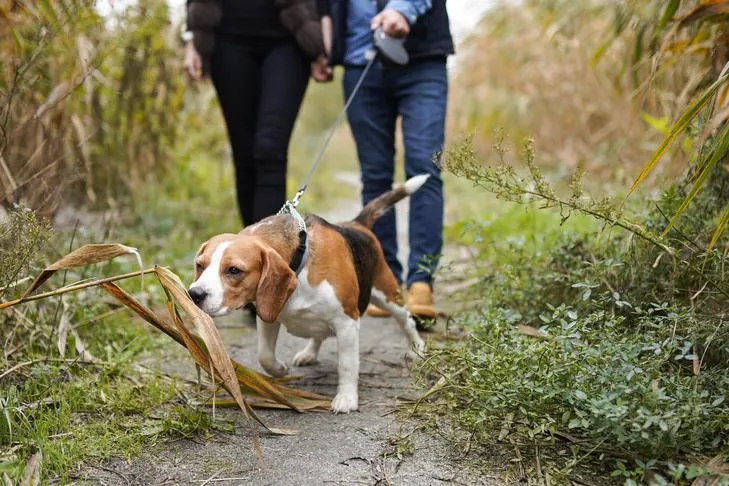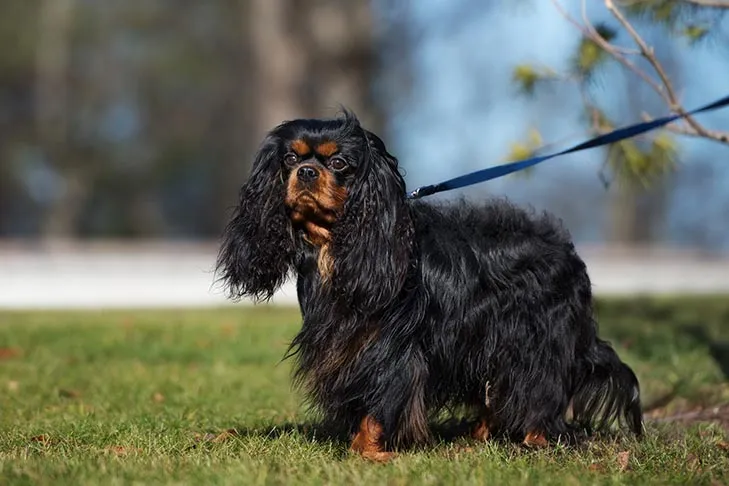Walking your puppy should be a joyous experience for both of you, a chance for exploration and bonding. However, for many puppy parents, it quickly turns into a battle of wills, with their enthusiastic furry friend dragging them down the street. It’s not only against the law to let your puppy off-leash in most public areas, but it can also be unsafe, potentially leading to encounters with other dogs or even your puppy running away. Keeping your puppy leashed provides greater control and safety, but the challenge often lies in training your puppy to stop pulling effectively. Nobody wants to be pulled along, and with a growing puppy, this can lead to uncomfortable or even injurious situations.
While leash pulling is a very common issue among puppies, rest assured that there are straightforward techniques you can employ to teach your young canine companion appropriate leash behavior. Adjusting your own actions during walks can also make a significant difference. By consistently applying the following tips, you’ll transform those strenuous strolls into harmonious walks where you and your puppy enjoy exploring the world together.
1. Always Reward Good Leash Behavior
Never underestimate the power of positive reinforcement. Your puppy’s good behavior, especially polite leash walking, should always be acknowledged. Puppies, like all dogs, tend to repeat actions that earn them a reward, whether it’s a tasty treat, enthusiastic praise, or even the chance to stop and sniff something interesting. If you only focus on correcting undesirable behaviors and overlook the good ones, your puppy is more likely to revert to less appropriate ways of getting what they want.
Make it a habit to carry treats with you on every walk, or be ready with encouraging pets and verbal praise whenever your puppy walks calmly beside you. Don’t be shy about rewarding them, especially in the early stages of training. Let your puppy know you appreciate their effort. Initially, reward them frequently and generously. As your puppy’s skills improve and they grasp the concept of walking on a loose leash, you can gradually reduce the frequency of treats, substituting them with “life rewards” like the opportunity to sniff a fascinating tree trunk or a brief, calm greeting with another dog. This helps them understand that polite walking opens up more enjoyable experiences.
2. Never Allow Your Puppy to Walk While Pulling
Your puppy’s primary motivation for pulling is often to get to where they want to go faster. Therefore, if you allow them to continue moving forward while they are pulling, you are inadvertently rewarding the very behavior you want to discourage. Since puppies repeat behaviors that are rewarded, this will only reinforce and worsen the leash pulling in the long run. The cardinal rule of loose-leash training is simple: never walk when your puppy is pulling on the leash.
The moment you feel tension on the leash, stop immediately. Plant your feet firmly and wait. Be patient; your puppy will eventually realize that pulling doesn’t get them anywhere. Wait for them to either return to your side or for the tension on the leash to loosen. This pause-and-wait method teaches your puppy that pulling brings the walk to a halt, while a relaxed leash allows it to continue.
 Two Basenji puppies meet in a vibrant green field outdoors, one on a lead.
Two Basenji puppies meet in a vibrant green field outdoors, one on a lead.
3. Wait for a Loose Leash Before Resuming Movement
If stopping when your puppy pulls is the rule, then knowing when to start moving again is equally crucial. The key is to wait for a slack leash. The leash should hang in a relaxed “J-shape” without any tension, and your puppy should ideally turn their attention back to you. In the beginning, this might take some time and a lot of patience. Your puppy might be confused at first, but eventually, they will look back or walk back towards you to see why you’ve stopped.
The instant you see that slack in the leash and their attention shifts, offer immediate praise and a treat right at your side. Then, calmly resume the walk. You might find yourself stopping and starting every step or two initially, but your puppy will quickly begin to associate pulling with stopping and a loose leash with continuous, enjoyable forward motion. This consistent feedback is vital for them to learn the desired behavior.
4. Incorporate Life Rewards into Your Walks
Walks should be a rich and engaging experience for your puppy, offering more than just a potty break. They provide essential physical exercise and crucial mental stimulation. While actively training your puppy not to pull on the leash, it might feel like these enriching elements are put on hold. However, you can enhance both your training and your puppy’s enjoyment by strategically incorporating “life rewards” for good behavior.
Life rewards are the everyday things your puppy naturally enjoys, like the opportunity to sniff a particularly interesting shrub, investigate a new smell, or calmly greet a friendly stranger. For example, if your puppy walks politely for a set distance, say 10 feet, without pulling, you can then release them to sniff a specific area for a few minutes. These bonus rewards serve as powerful motivators, convincing your puppy that walking respectfully truly pays off, reinforcing the positive association with loose-leash walking.
5. Walk at an Appropriate Pace
Often, humans tend to walk at a pace that is far too leisurely for a curious and energetic puppy. Even small breeds can move those little legs much faster than their human companions might prefer. This disparity in natural walking speed is a significant reason why puppies pull – they simply want to get moving and explore! To help your puppy feel more engaged and less inclined to pull, try to choose a pace that is comfortable and brisk for both of you.
While you can certainly teach your puppy to stay and match your exact speed over time, during the initial training phase, a quicker pace can make it easier for them to learn not to pull on the leash. A consistent, slightly faster walk can help maintain their focus and prevent them from feeling the need to surge ahead.
6. Be Consistent With Your No-Pulling Rule
It can be incredibly tempting to let your puppy pull sometimes, especially when you’re in a hurry. Perhaps you’re running late, or the weather is uncomfortably cold, and you just want your puppy to do their business quickly. However, it is absolutely critical to be unwavering and consistent with your no-pulling rule, regardless of the circumstances. Every single time you allow your puppy to pull on the leash, you effectively undermine and set back all your previous training efforts.
Until you can consistently walk more than a few feet at a time with a loose leash, it’s best to let your puppy take care of their potty needs in your yard or at the curb right outside your home. Save the longer, more enriching walks for when you have ample time and patience to dedicate to training. Consistency is the cornerstone of successful puppy training, ensuring your puppy understands that the rule about not pulling applies every time you are on a leash.
 A curious Beagle puppy pulls vigorously on the leash, sniffing the ground during an outdoor walk.
A curious Beagle puppy pulls vigorously on the leash, sniffing the ground during an outdoor walk.
7. Keep Training Sessions Short and Fun
Working with a determined puppy who loves to pull can be frustrating. In the initial stages, you might find that you don’t make it much further than the end of your driveway. Rather than pushing your puppy until both of you are feeling irritable and discouraged by the lack of apparent progress, it’s far more effective to keep your training sessions brief and positive. Puppies, especially young ones, have very short attention spans. Asking too much too soon is unlikely to yield the positive results you desire.
Remember, the goal isn’t to cover a certain distance on your walk. The true objective is to walk with a loose leash, even if that means only going as far as the house next door. Ending a session on a high note, even after a short burst of good behavior, will leave your puppy eager and ready for the next training opportunity. Gradually increase the duration and distance as your puppy shows improvement.
8. Be Interesting and Engaging on Walks
For a puppy, the world is a thrilling wonderland, brimming with novel sights, intriguing sounds, and an overwhelming array of smells. This means there’s a lot of competition for your puppy’s attention, and countless temptations that could make them want to drag you down the sidewalk. If you’re distracted by your phone or otherwise ignoring your puppy, there’s little incentive for them to focus on you.
However, if you make yourself an interesting and dynamic presence, your puppy will be far more likely to follow your lead. Talk to your puppy in an encouraging tone, take quick breaks for mini-training exercises, or stop for a brief game of tug. By keeping them engaged and anticipating what you might do next, your puppy will pay more attention to you, making them less inclined to pull towards external distractions. This proactive engagement is key to successful loose-leash walking.
9. Stay Calm
Walks can present a variety of emotionally charged situations, whether it’s the excitement of seeing a favorite person or the apprehension caused by an approaching barking dog. Regardless of whether these situations are exhilarating or frightening for your puppy (and you), it is essential that you control your own emotions. Puppies are incredibly adept at reading human emotions, and your mood can easily transmit down the leash, either intensifying their excitement or heightening their anxiety.
To help keep your puppy calm and focused, you need to remain calm yourself. By demonstrating a relaxed demeanor, you show your puppy that there’s nothing to be overly excited or worried about. The more relaxed your puppy feels, the more likely they are to listen to your cues and exhibit appropriate behavior. A calm leader fosters a calm follower.
 A serene Cavalier King Charles Spaniel puppy sits patiently on a lead outdoors.
A serene Cavalier King Charles Spaniel puppy sits patiently on a lead outdoors.
10. Engage Your Puppy in Distracting Situations
When faced with distractions like other dogs, squirrels, or even unfamiliar people, it’s easy for your puppy to forget all their good leash manners and resort to pulling. They might pull to eagerly approach something they find exciting, or conversely, pull intensely to retreat from something they find suspicious or scary, such as strangers. In either scenario, polite leash walking can quickly go out the window.
To help your puppy navigate these challenging situations, proactively shift their focus back to you. Calmly offer them high-value treats or initiate a quick game. For instance, ask for a “sit” or a “hand target.” These simple exercises are familiar to your puppy and can help keep them engaged with you as the distraction passes by. You can also teach your dog to stop pulling on the leash and use the “watch me” cue to establish eye contact, giving you more control over where their attention is directed. The key is to be proactive: grab your puppy’s attention before they even fully register the distraction, and with practice, they might not even notice it at all. Additionally, incorporating consistent potty training a puppy routines can help manage their need to pull for elimination purposes.
Mastering the art of loose-leash walking with your puppy takes time, patience, and unwavering consistency. By implementing these ten practical tips, you can transform frustrating walks into enjoyable adventures for both you and your beloved puppy. Remember, every step of progress, no matter how small, is a step towards a more harmonious partnership. With dedication, you’ll soon be enjoying peaceful strolls where your puppy walks politely by your side, eager to explore the world with you.
